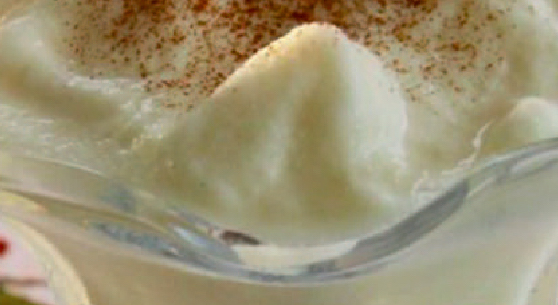Photos by K2 Images and Mike Yawn

Ed Wilson grew up in Louisiana, but his professional career as an artist has evolved largely in Houston, Texas, where he has worked for the past 30-plus years. He specializes in metal sculptures, often working on an impressive scale. His “Soaring in the Clouds” at the George R. Brown Convention Center, for example, is 65 feet high, 100 feet wide, and 50 feet deep. More recently, Wilson completed work on “The Raven,” a large and imposing sculpture on the grounds of Sam Houston State University. But his pieces, large and small, make for an impressive and diverse body of work, reflecting Wilson’s broad creativity and fueling his burgeoning reputation as an artist.
Tell us what it was like to grow up in northwest Louisiana in the 1950s and 1960s. Were the arts appreciated there?
I was born in Arcadia, and I grew up in Minden—two small towns about 15-20 miles apart. There wasn’t much going on; it wasn’t very exciting. We did have an art class in high school, and it was the class that I enjoyed. My art teacher, Ms. McKinney, was my favorite teacher.
What nurtured your art career in such an environment where the arts weren’t much supported?
When I got out of high school, I was a milkman. I did home delivery on a country route, so I drove around all day by myself, and that gave me plenty of time for contemplation. I knew I didn’t want to live my whole life in the area I was in, and I knew the only thing I really enjoyed in school were the art classes. I decided I would move to Baton Rouge and begin school at Louisiana State University. I decided to become an art student. At that time, I had never been to an art museum or art gallery.
Did you major in art at LSU?
Of course, although I didn’t really know what that meant. I thought I might just have my paint brushes out while wearing a black beret or something. But my second semester, I took a sculpture class, and that’s where I began to gain focus, with the encouragement of a professor named Michael Daugherty.
Were you initially drawn to steel?
I was doing about half steel and half stone carving. The head of the department at that time was carving stone, and I was into Isamu Noguchi.
What other major artists were you thinking about during this time?
I had taken art history, and I was looking through books on art. So I knew the big names: Noguchi, di Suvero, David Smith, George Rickey, guys like that. Certainly David Smith was the largest influence. He learned from Julio Gonzalez, who was the father of the fabricated steel sculpture, and he inspired Smith. I saw myself in that line, inspired by the pioneers of that type of art.
You came to Texas for your graduate education.
Yes, I took a year off after graduating from LSU in 1975, and I applied to five schools across the country. One artist I had heard of and seen work from was James Surls, and he was teaching at the University of Houston’s program. I knew his work, I knew Houston was a big place, and I knew they had a lot going on, so I chose University of Houston.
What was Surls like?
Surls exuded this incredible amount of positive energy, and he was wide open to creative spirit. Having him as an example of how to be an artist was invaluable. He was always working; the hours he put in were impressive.
After your MFA, did you work exclusively as a professional artist?
Far from it. I had two children, I was a Shop Technician at Rice University part-time, I was doing some free-lance work doing things like building decks, and I was doing some art when I had time. But it took a while for that to develop into a real career.
By the 1990s, I was still doing odd jobs, albeit better-paying odd jobs, and I was able to support myself, but it wasn’t necessarily all through art. I was doing a lot of functional things, such as furniture, gates, or railing. I was drawing and doing design work, so it was art in a way, but functional art. Around 1995, I did probably the dumbest thing I’ve ever done: I took out a bunch of credit cards, and I said, “I am just going to live off of these for a year, and I am going to do nothing but art.” I did it. I produced a lot of art, and I ended up heavily in debt. But one Sunday morning a couple of years later, two guys came in, and they started asking about different pieces, and they ended up spending $20,000 on my work. That was a lot of money at the time, and it was about what my credit card debt was. It got me out of the hole, and it put me into a different position as an artist.

That would also be about the time you met your wife, Magda, who is also an artist.
Yes. At the time, though, she was an elementary school teacher living in Berlin. We met in Idaho, and we spent about a year doing a series of dates that involved flying back and forth across the Atlantic Ocean. Eventually, she did a teacher’s exchange program that allowed her to teach here, and she began doing art—printmaking. She does some really fantastic things. She is much more responsible with things than I am, and she helped with organization and budgeting and such. We were able to buy a house and a studio, but we ultimately decided to move to Berlin, where we stayed for three years. She’s been a wonderful influence on my life, in many seen and unseen ways.

Some of your art addressed the concentration camps in Germany. How did that idea come about?
While I was in Berlin, I photographed the camps pretty extensively. When I got back to the United States, I began thinking about it more, and I looked at those photographs, measured ratios of the buildings, and then I just scaled out those photographs three-dimensionally.
In looking at the photos, it appears you tried to capture the despair and gloom that they represent, while also adding an aspect of redemption.
Yes. It struck me as interesting that the Germans have kept and preserved these horrible structures, and the fact that they preserved them for their historical importance seems to me somewhat redemptive. I tried to make them as beautiful as possible.

Not all your pieces are large, but I want to talk about a couple of other large ones. Tell us about “Soaring in the Clouds,” which is at the George R. Brown Convention Center.
“Soaring in the Clouds” is one of the largest artistic projects ever commissioned by the City of Houston. The sculpture was part of a coordinated effort to beautify Houston in advance of Super Bowl LI, which the city hosted in 2017. The kinetic bird-and-cloud themed sculpture consists of some 300 “elements” illuminated by an innovative lighting system.
I originally proposed the piece for Intercontinental Airport, but I didn’t get that commission. I thought I had nailed it, and it bummed me out. But I was able to re-envision it on a grander scale, and that’s what I proposed, later, to the George R. Brown Convention Center. They put together a panel to review proposals, and I made my presentation. Afterward, I was told the panel had selected my piece. That selection, it turned out, was rescinded. Other factors had come into play.
The Houston Arts Alliance was managing the selection process and, after the initial selection was made, some high-profile collectors put pressure on the Alliance to revisit the commission. Houston artists—who understand and respect a juried selection process—objected, with some artists removing their work from public spaces in protest.
This was a big blow to me. It was an $830,000 commission. But the Houston Chronicle and Glasstire published articles about this process. They ended up deciding to reopen the competition.
The competition worked out in your favor a second time.
That’s true. The same seven artists who had reached the semi-final stage of the competition were invited to compete again. And, again, my piece, “Soaring in the Clouds,” was selected unanimously.

A smaller version of this was also exhibited at the Moody Gallery in Houston.
Yes, I used some of my surplus pieces from “Soaring in the Clouds” for “Soaring Reverie,” and it is always nice to work with Betty. She is a delightful person, and a fair and honest dealer, just about the best there is to work with in Houston.
Tell us about “The Raven,” which you recently installed at Sam Houston State University.
(Editor’s note: technically, Wilson’s SHSU piece is titled, “golanv,” which means, and is the transliteration, of “Raven.” Around campus, it is known simply as, “The Raven.”)
Three of us were asked to present proposals for the SHSU commission: Paul Kittleson, Dylan Conner, and me. Paul Kittleson is my neighbor, and he was the best man at my wedding. Dylan Conner was the lead fabricator in my studio for a couple of years, and he helped me on “Soaring in the Clouds.” So this was like a family affair! I would have been happy if either of the other two would have won the competition.

What research did you do on Sam Houston to help you create this sculpture?
Well, growing up in Louisiana, I didn’t have Texas History in school. But Sam Houston was one of the most fascinating men in American history. His accomplishments were immense, and he was both interesting and complex as a historical figure. And, of course, his name among the Indians was “The Raven,” and the name and the man made for a nice inspiration for an art work that is literally larger than life.

There’s an ominous quality to the sculpture.
I think any time you do a large black bird, there’s going to be something ominous about it (chuckles). There are all kinds of connotations associated with black birds across diverse cultures. Just think of Poe’s “The Raven” or Alfred Hitchcock.
How long did it take you?
I got the commission in January 2017. I began fabrication on it in the spring of 2017, and we installed it in June of 2018.
One of the intriguing things to me about your work—and “The Raven” in particular—is that you can take metal and make it different colors without using paint. “The Raven” is stainless steel, but the steel is very dark, not the silvery-reflective material to which we are accustomed.
You can do a lot of things with carbon steel to change its color, but with stainless steel, I’ve only found one chemical that does what I want, and that’s “Stainless Steel Black.” I’m not a chemist, but the main chemical in it is hydrogen chloride, and it turns the stainless steel black. That’s what I used for “The Raven.”
Earlier, you mentioned David Smith, whose work was very diverse in terms of its look. My review of your career is similar: you use multiple metals, numerous colors, and diverse motifs. Is that correct and, if so, do you consciously strive for greater aesthetic diversity?
I think your observation is correct. I don’t seek out a “typical” look. I like the challenge of making a piece specific to a site, or an idea, or a culture, or a situation. I think, for example, “The Raven” reflects its site and symbolizes the history of the area. The consistency in my work—the line that runs through it all—is the material and, I hope, the craftsmanship that goes into it. That’s been my approach, and for me it generates creativity and productivity.



